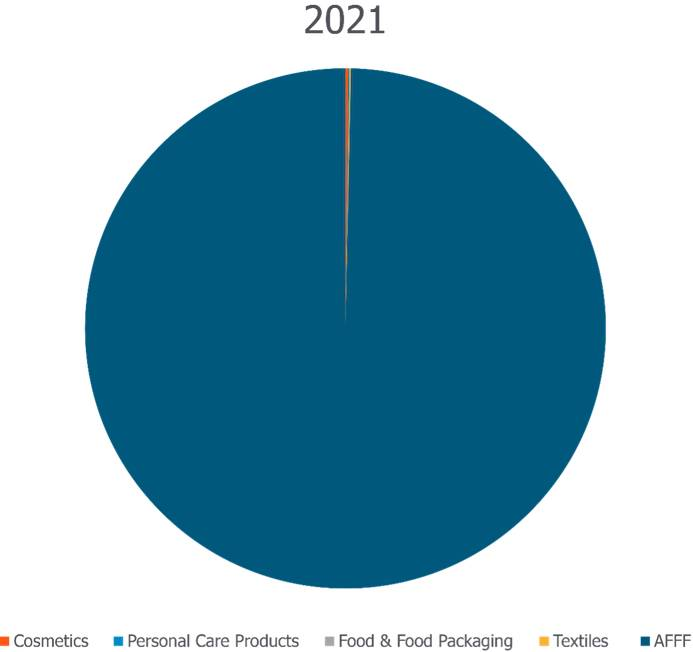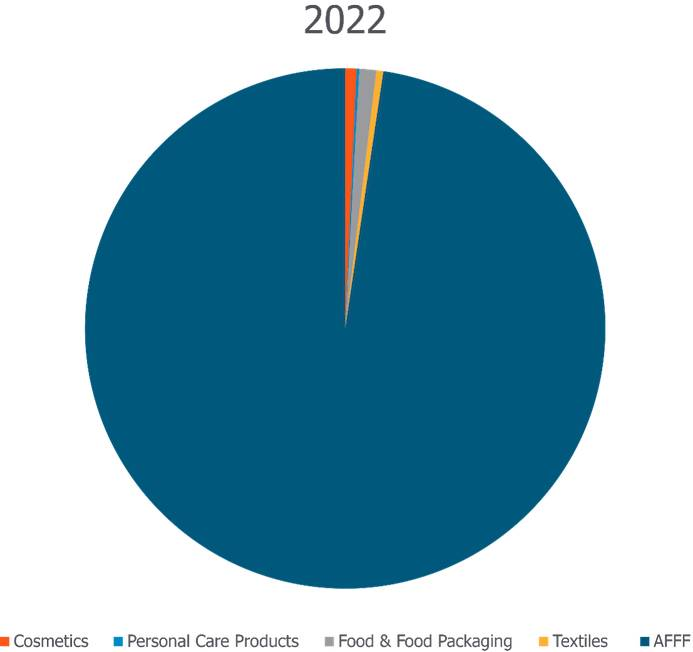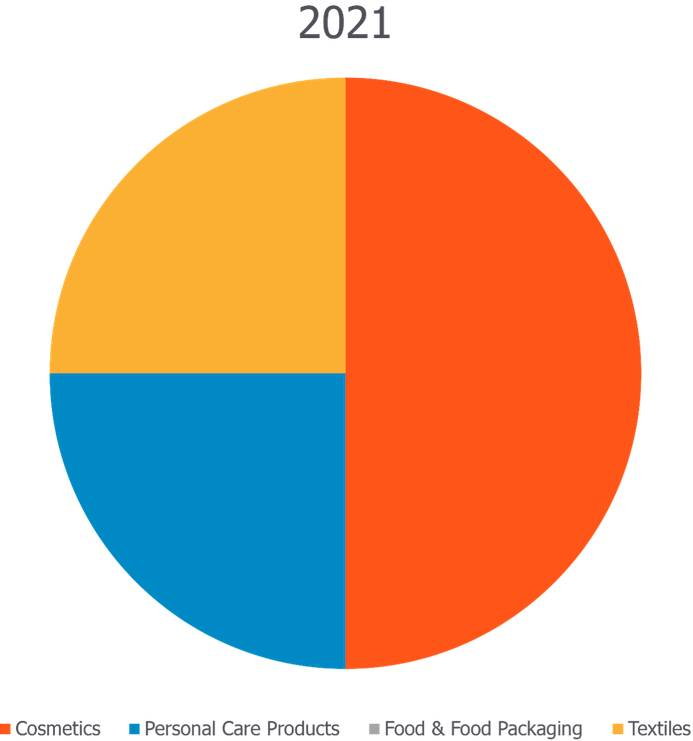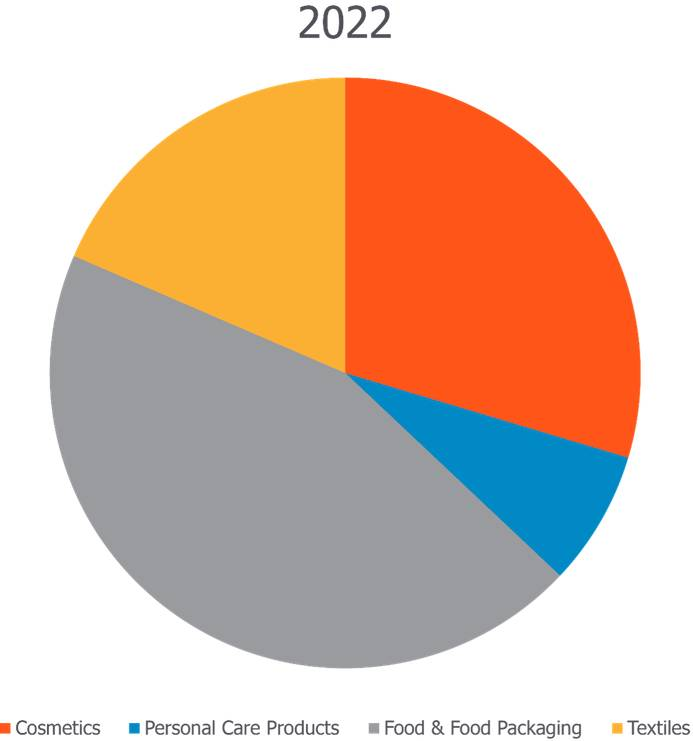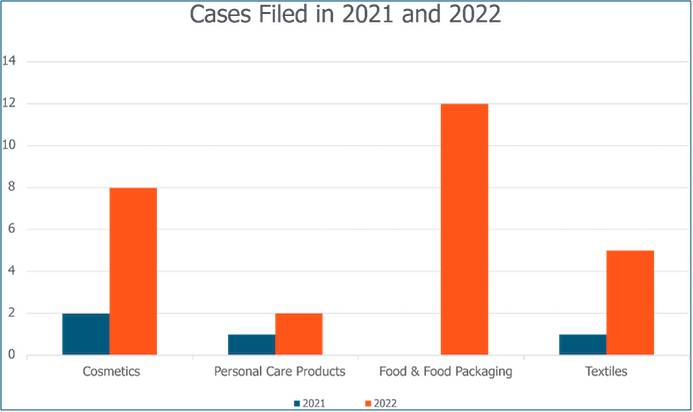Insights
Litigation trends in PFAS consumer product litigation from 2021 to 2022
Jun 08, 2023In recent years, the topic of per- and polyfluoroalkyl substances (“PFAS”) has become well-known to the general public. State and federal regulators have implemented new regulatory standards for PFAS in groundwater, drinking water, surface water, soil, firefighting foam, air emissions, food packaging, and consumer products. The topic of PFAS contamination and its prevalence in consumer products and the environment is featured on late-night comedy shows, movies, and books. As knowledge of PFAS has increased, the number of civil lawsuits filed involving harms allegedly caused by or related to PFAS chemicals and PFAS-containing products are steadily on the rise in a variety of different sectors.
In 2021 and 2022, the lawsuits that were filed predominantly focused on the following product categories:
- Aqueous Film Forming Foam (“AFFF”) used to control petroleum-based fires;
- Food and food packaging products;
- Textiles; and
- Personal care products and cosmetics.
Of the product categories listed above, AFFF is the most common product involved in civil lawsuits, but there have been a steady increase in the number of PFAS cases filed from 2021 to 2022 in the other categories, and the majority of these claims involved deceptive trade practices and a failure to warn. There were also a number of suits alleging water contamination, which tended to be directed towards chemical companies that had previously produced PFAS.
Before discussing the trends, please note that the information below is not intended to be a specific or exhaustive compilation of all PFAS litigation filed over the last two years. Due to limitations in the way that filings are reported, there may be instances where some filings have not appeared in BCLP’s research; however, the data that we have collected provides valuable information regarding the general trends in PFAS litigation over the last two calendar years.
AFFF Cases Dominate Current U.S. PFAS Litigation
AFFF is a fire suppressant used to extinguish flammable liquid fires such as fuel fires. According to the U.S. EPA, the biggest users of AFFF are the U.S. military, the petrochemical industry, and the aviation industry
In 2021 and 2022, the vast majority of civil cases filed in the U.S. regarding PFAS involved AFFF as the product at issue. Most of these cases were personal injury claims under a theory of products liability. There is currently an active multidistrict litigation (“MDL”) under the jurisdiction of the United States District Court of South Carolina handling over 2,500 pending cases regarding PFAS emissions from AFFF. The litigation of AFFF currently dominates the current field of PFAS civil suits, and a similar number of new AFFF cases were filed in 2021 and 2022.
Other PFAS Litigation Cases Filed in 2021 and 2022
In order to compare the civil litigation trends regarding PFAS exposure amongst the remaining types of consumer products reviewed, we compared the trends between claims regarding food and food packaging, textiles, personal care products, and cosmetics.
The biggest shift in litigation trends from 2021 to 2022 regarding these consumer products is the explosion of food and food packaging claims filed in 2022. Large companies, including Burger King Corporation, Conagra Brands, Inc., the Keurig Dr. Pepper Inc., J.M. Smucker Company, among others, have faced lawsuits from consumers alleging claims of deceptive trade practices, such as misrepresentations in branding and false advertising. In each of these lawsuits, plaintiffs usually allege PFAS is found in the companies’ product (or in its packaging), which in turn renders that branding of a product as “natural” or “healthy” and is misleading to consumers. These lawsuits target products including, among others, popcorn, pet food, juice drinks, and fast food. Additionally, the majority of lawsuits in 2022 were filed in Illinois, California, and New York, in both state and federal court.
In addition to the increase in food and food packaging cases, there was also a significant increase in cases filed in 2022 in all types of consumer products reviewed.
Similar to food and food packaging cases, there was a large increase in cases filed alleging PFAS in cosmetic products, which includes makeup and other beauty products, such as nail polish and hair dye. There was a less significant increase in the similar, yet distinct, personal care products category, which includes toiletries such as shampoo, soap, and toothpaste. Cases alleging PFAS in textiles was another area of consumer products that showed a significant increase in cases filed in 2022 from 2021, and these products included menstruation underwear and rain jackets.
Similar to the food and food packing cases, the majority of cases involving cosmetics, personal care products, and textiles involved allegations of misrepresentations to consumers regarding the safety of the product and a failure to warn that the product included PFAS. Unlike the food and food packaging cases, which tended to focus on misrepresentations as to “natural” or “healthy” ingredients, the cases related to cosmetics, personal care products, and textiles alleged misrepresentations as to the “sustainability” of the product.
In these cases, Plaintiffs usually alleged that PFAS was a “forever-chemical,” so by definition, a product that contained PFAS was not “sustainable.” For example, Recreational Equipment Inc. (“REI”) was sued by purchasers of certain outdoor apparel that allegedly contained PFAS. The consumers alleged that they chose to purchase their products from REI due to its claims regarding its commitment to “sustainability,” but REI purportedly “chose not to disclose the PFAS-content of its Products, and instead concealed this information from environmentally and health-conscious consumers, to increase revenues by the cost savings associated with the use of these chemicals.” “Sustainable” assertions are now being used as a marketing claim used in PFAS litigation, which is particularly challenging for businesses that are concerned about the importance of environmental sustainability.
Conclusion
The undeniable trend is that litigation regarding PFAS is on the rise, and this trend is anticipated to accelerate in 2023. Although the majority of cases filed in 2021 and 2022 involve AFFF, there were a significant number of class actions and other lawsuits that alleged personal injuries and misrepresentations regarding food and food packaging products, textiles, personal care products and cosmetics. Furthermore, there is an increase in the number of PFAS consumer products cases filed in 2022 compared to 2021. Depending on the success of these claims, the recent cases may just be the beginning of the types of lawsuits facing current and former producers of PFAS-containing products.
For more information on PFAS compounds and related matters, please visit our PFAS webpage. If you have a question about any litigation trends or cases, contact Tom Lee, Emma Cormier, Christian Bromley, John Kindschuh, or any other member of our PFAS team at Bryan Cave Leighton Paisner LLP.
Related Capabilities
-
PFAS
-
Environment



